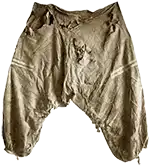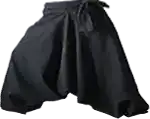|
||
|
|
MONG LANGUAGE
After Mong migrated into different regions, we lived among different people. Therefore, our assimilations are different. Mong now speak differently depending on where we are. We also have various dialects. Some are very close and some are very different, and they are equally important of our culture. Most important is that Mong language(s) is not the "Mab language" (南蛮语,蛮语,三蛮语). According to Miao national history, the ancient Miao of Nanman, Jing Man, Man Po, Western Yi, Manyi [of Chu], and others especially people of San Miao spoke the Man language ("Mab"). What about ancient Han language? Was it part of the Man language? Yes, present-day local Han language along the Yangtze River and to the east of nearby regions still speak variations of Man language (蛮语). Here is another example of old Han language. Even though Mong lived among the Nanman Baiyue people for the last several hundred years, Mong language is still very different from the Nanman language. Therefore, it is incorrect to define Mong language (盟语;蒙语) into Miao Nanman language (苗语;南蛮语).
MONG CLOTHES In early civilizations, humans clothed themselves with leaves, animal skins, and other materials. Mong oral histories states that Mong knew how to make hemp clothes very early on. Our clothing styles also testify that our ancestors wore woven fabrics. Ancient artifacts and literatures also support that Mong was a civilized nation with writings and woven clothing earlier than Xia Dynasty. For example, literatures reference Faajtim's ancestral clan as Shaodian (meaning those who invented writing characters). Further more, earliest artifacts of the Mong ancestral Faajtim [during Zhou Dynasty] show that Faajtim was fully clothed. He wore long coat. In another drawing he had on waste belt with a long coat split by the legs. These features are of the Mong men clothing which many still dress up this way during special events. Both Mong men and women were known to wear "bird shoes" which the tip is curved. They were designed for snow and desert environments. The designs of bird shoes became simplier (normally cloth made) for those who situated into the south where there is no snow or desert. Mong oral history says these are royal shoes, and are now mostly used for rituals. Mong women wore pleated batik and embroidered woven fabric with various patterned skirts and dresses. Traditionally, our embroidered clothings were red designs. Now, they come in various color designs including plain black and plain white. Mong women clothings were also decorated with coins & beads. This is not just for expressing the beauty but to show the wealth. These types of fashions also exist in Northern Asia and Central Asia and very different from the San Miao's descendants of Nanman Baiyue traditional clothings. Mong men were known to wear baggy pants during the B.C. periods. This is very different from the San Miao (Nanman & Baiyue) or Han, which their men wore shang-wrapped skirts and dresses. Why did Han men wear skirts and dresses like the San Miao? Because Chu Man (Nanman & Baiyue) and Shu Han became the government during Han Dynasty. Traditional Mong clothings are very different from traditional Nanman and Baiyue people of Jiangxi-Fuguan, of the Southwest, and different from the Han. The way Nanman Baiyue dressed was very different from the Mong. Nanman region was also known as the naked area during ancient time. After Nanman Baiyue became stronger during Chu kingdom and Han Dynasty, their men were then known to wear skirts and dresses.
|
|
MARRIAGE
Being part of the northern nation during ancient time, Mong marriage law prohibits marriage among the same clan names. Such law was strictly enforced during the Mong kingdoms. Presently, Mong still go by this marriage custom. Nanman and Baiyue (of San Miao) allow marriages among the same family name. This is a culture that clearly shows that Mong are not Miao Man.
BIRTH NAME & COURTESY NAME
Once a child is borned, the umbilical cord is to be buried by the main central post of the home. Like other cultures, Mong named their sons and daughters when they were borned. One difference is that once a son is married [and have the first child], he would be renamed with an adult [courtesy] name through a ceremony ritual. With this culture, almost all Mong men have adult courtesy names. Did Nanman and Baiyue have this type of custom in renaming males with dult names? This is something for us to evaluate when grouping our people into Miao Nanman.
BURIAL RITUALS AND CUSTOMS Mong believe that the corpse of a decease person must be well preserve and protected. Therefore, it is neccesary to have a proper burial. That way the soul can find the birth place and ancestral home to reincarnate again. According to the traditional "Show The Way" ritual, Mong direct the souls to go find Faajtim Huabtais. Others instructed the souls to find "Wang Shim Kaav" or "Tsheej Khaab". Others say "shaib vaaj shaib kaav shaib khib". Since Mong do not have a national religion for last several centuries, "Show The Way" locations may be different. Two most mentioned places in the psalm "Show The Way" are "Tuam Tshoj" and "Ntuj Qhua Teb Nkig, Ntuj Txag Teb Nqhuab" [Ntuj qhua Teb Nkig, Ntuj Txag Teb Tsaus]. Tuam Tshoj is traced to Northern Asia which is the upper land of the Yellow River Basin, present-day Inner and Outer Mongolia, the Northeast of China, and [part] Siberia. "Ntuj Qhua Teb Nkig, Ntuj Txhaj Teb Tsaus" refers to a desert terrain and perhaps a snowy dark environment during winter. This points to Gobi Desert and into Siberia. On the other hand, San Miao descendants of the Manyi were known to practice cremation. They believe that by burning the body into ashes would allow reincarnation. Manyi and especially Han who did not burn their deads were known to practice "bone collecting". The bones are stored in jars. This culture is not a part of the Mong. However, Maab (Man) women who married Mong men were also known to have taught their children to find their parents' bone to ritually releasing the souls. Nanman or Manyi as well as Qiang and Di of San Miao descendants were known to practice cremation very early on which is not a Mong culture.
OTHER DIFFERENCES |
|
|



